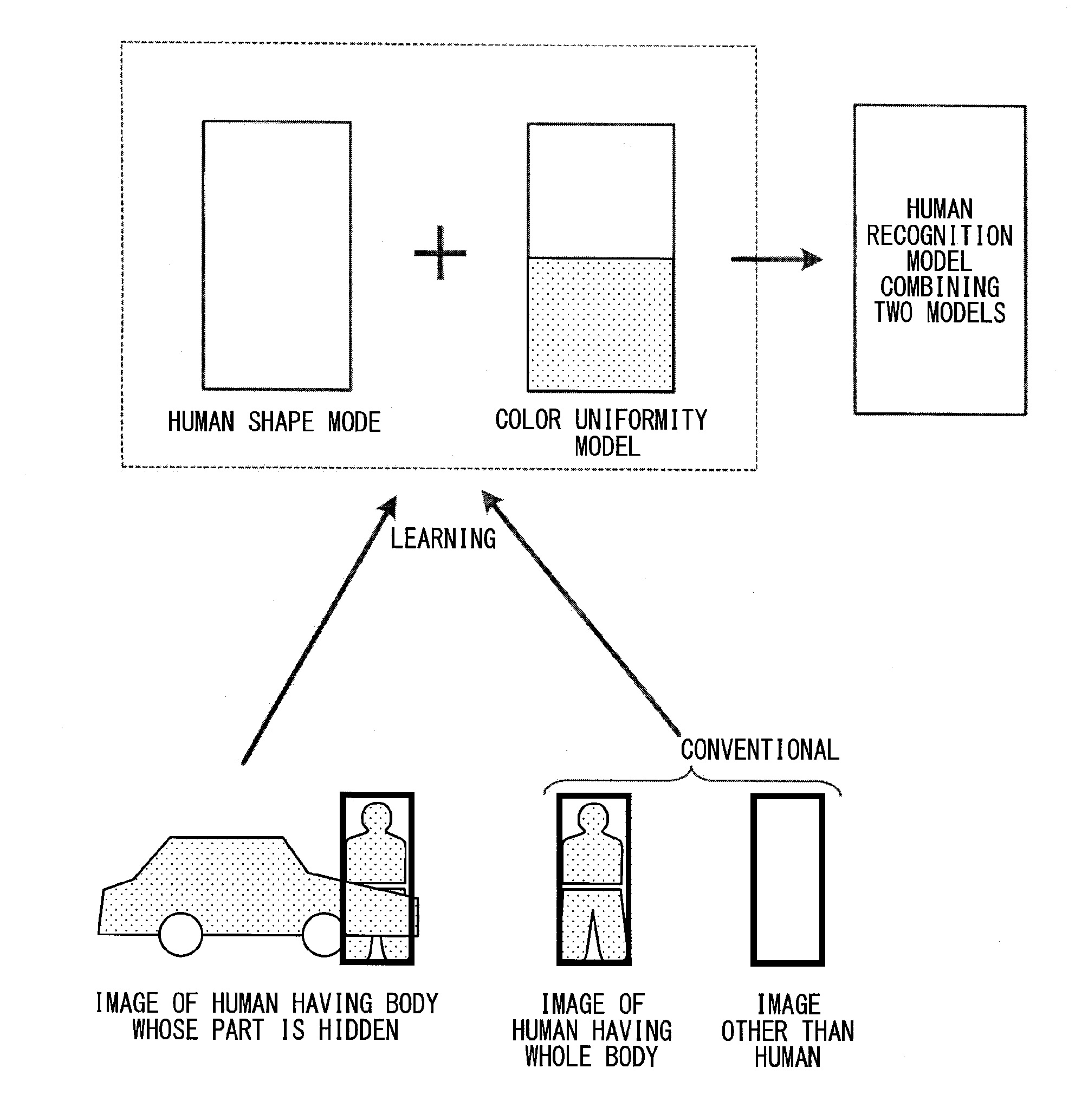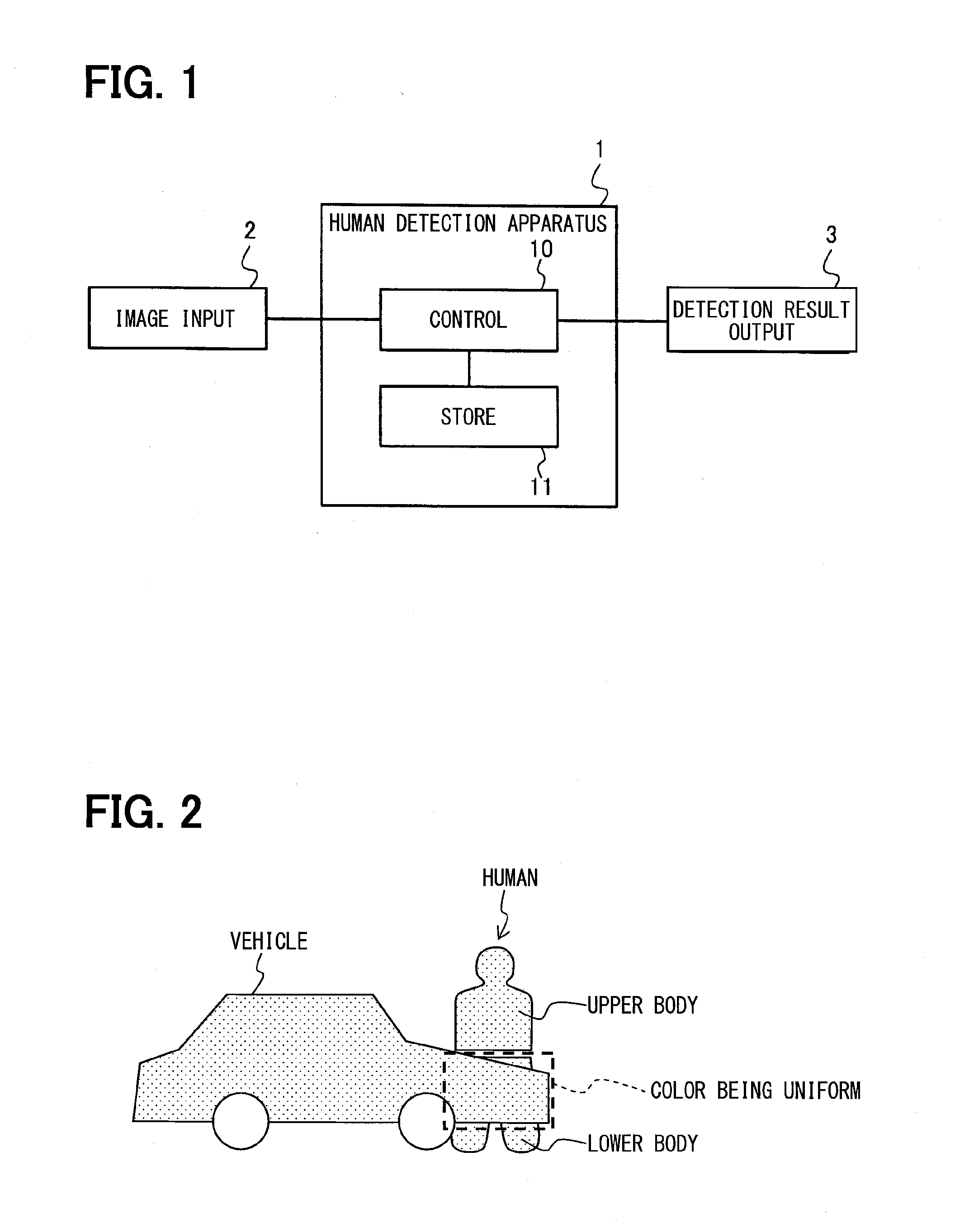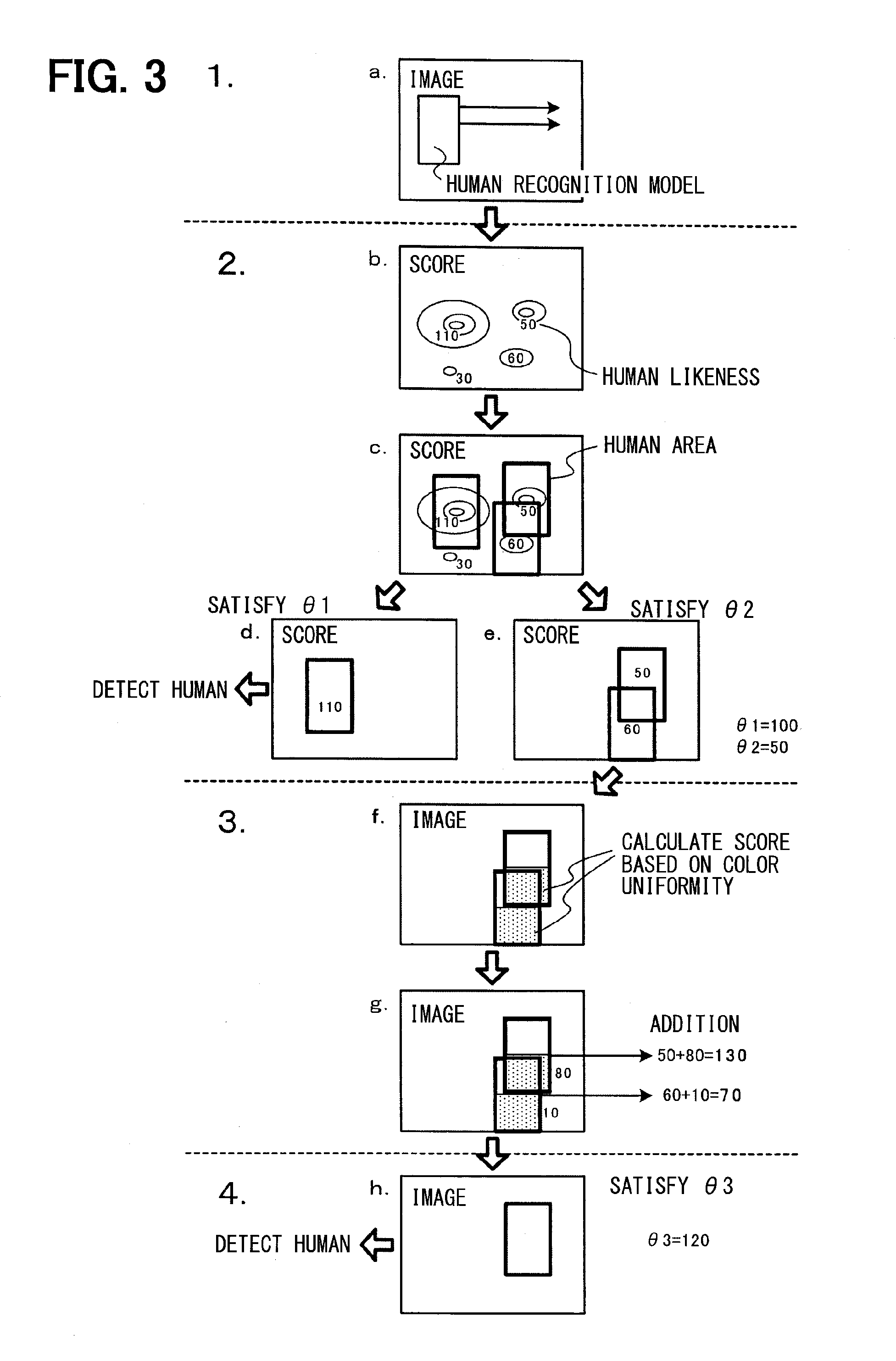Human detection apparatus
a human detection and apparatus technology, applied in the field of human detection apparatus, can solve the problems of deteriorating recognition rate and weak robustness of recognition results, and achieve the effect of improving human recognition rate and low credibility of candidate area estimated on the basis of human recognition models
- Summary
- Abstract
- Description
- Claims
- Application Information
AI Technical Summary
Benefits of technology
Problems solved by technology
Method used
Image
Examples
first embodiment
Effect of First Embodiment
[0033]The degree of color uniformity is determined to the image of the lower area (corresponding to the lower body) of a human candidate including the portion of which the human likeness score calculated using the ordinary human recognition model does not satisfy the threshold θ1 but satisfies the threshold θ2. Then, when the sum total score of the score corresponding to the degree of color uniformity in the lower area concerned plus the human likeness score in the human candidate concerned is greater than a specified value, the area of the human candidate concerned is determined to be a human. According to such procedure, it is possible to improve the recognition rate to a human of which a part of the body is hidden, such a human having been difficult to be detected only by the ordinary human recognition model.
Second Embodiment
[0034]The procedure of human detecting in a second embodiment performed by the control circuit 10 of the human detection apparatus ...
second embodiment
Effect of Second Embodiment
[0039]The area combining the upper body area detected using the recognition model for recognizing a specific area (the upper body) of the human body and the lower body area detected using the color uniform model to a specific area corresponding to the remaining body part (the lower body) other than the upper body area concerned is recognized to be a human. In this way, by taking the recognition result using the color uniform model into account, it is possible to furthermore improve the recognition rate to a human of which the lower body is hidden, compared with the recognition result by the pattern recognition of only the upper body. About the determining method of the degree of color uniformity in the lower body area, it is also preferable to calculate the degree of color uniformity from the image information instead of employing the color uniform model.
Third Embodiment
[0040]The human detecting method in a third embodiment performed by the control circuit...
third embodiment
Effect of Third Embodiment
[0043]With the use of a human image of which a part of the body is hidden and a human image which is not hidden at all, it is possible to learn and create the human recognition model combining the feature quantity of the profile shape of the image recognized as a human and the feature quantity of the color uniformity of the image recognized as a shielding object which hides the human body. The human recognition model learned in this way is improved more with respect to the description accuracy of information compared with the recognition model in the past. With the use of such a human recognition model, it is possible to improve the recognition rate to a human of which a part of the body is hidden, by combining the recognition on the basis of the feature quantity of shape and the recognition on the basis of the feature quantity of color uniformity.
PUM
 Login to View More
Login to View More Abstract
Description
Claims
Application Information
 Login to View More
Login to View More - R&D
- Intellectual Property
- Life Sciences
- Materials
- Tech Scout
- Unparalleled Data Quality
- Higher Quality Content
- 60% Fewer Hallucinations
Browse by: Latest US Patents, China's latest patents, Technical Efficacy Thesaurus, Application Domain, Technology Topic, Popular Technical Reports.
© 2025 PatSnap. All rights reserved.Legal|Privacy policy|Modern Slavery Act Transparency Statement|Sitemap|About US| Contact US: help@patsnap.com



